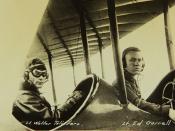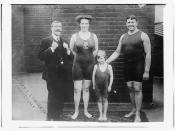1. Contrast Walter Cunningham and Burris EwellThe novel "To kill a Mockingbird" by Harper Lee portrays the differences in Walter Cunningham and Burris Ewell by allowing the readers to notice the stark contrast between them. Although the boys are both from poor families, there is an obvious difference in their upbringing as Walter is meek and mild-mannered while Burris is rude, obnoxious and inconsiderate. Walter happens to take some pride in his appearance as "he did have on a clean shirt and neatly mended overalls", a description of his clothing through simple imagery. On the contrary, Burris was as squalid as his demeanour, depicted through cumulative listing as "the filthiest humanâ¦his neck was dark grey, the backs of his hands were rusty, and his fingernails were black". A repugnant image portraying his lack of hygiene. Walter is reasonably friendly, making polite conversation with the Finches, as "he and Atticus talked together like two men".
A simile is applied to indicate Walter's maturity and his amiable nature. In contrast, Burris Ewell is depicted as a foul-mouthed, ungracious boy, referring to Miss Caroline as a "snot-nosed slut of a school-teacher". His informal and foul language mirrors his grimy appearance and nasty personality. Despite the fact that the Ewells and the Cunninghams are both quite low-class and poor, it is discernible that Walter has developed into a mild-mannered mature young man while Burris is highly unpleasant. Harper Lee has emphasized the contrasting characters Walter Cunningham and Burris Ewell, demonstrating that it is not the class to which a person belongs to that influences their personality but their upbringing.
2. Comment upon Atticus' final speechAtticus makes his closing remarks as he has finished going over the evidence, making a personal appeal to the jury. He points out that the prosecution has produced...


